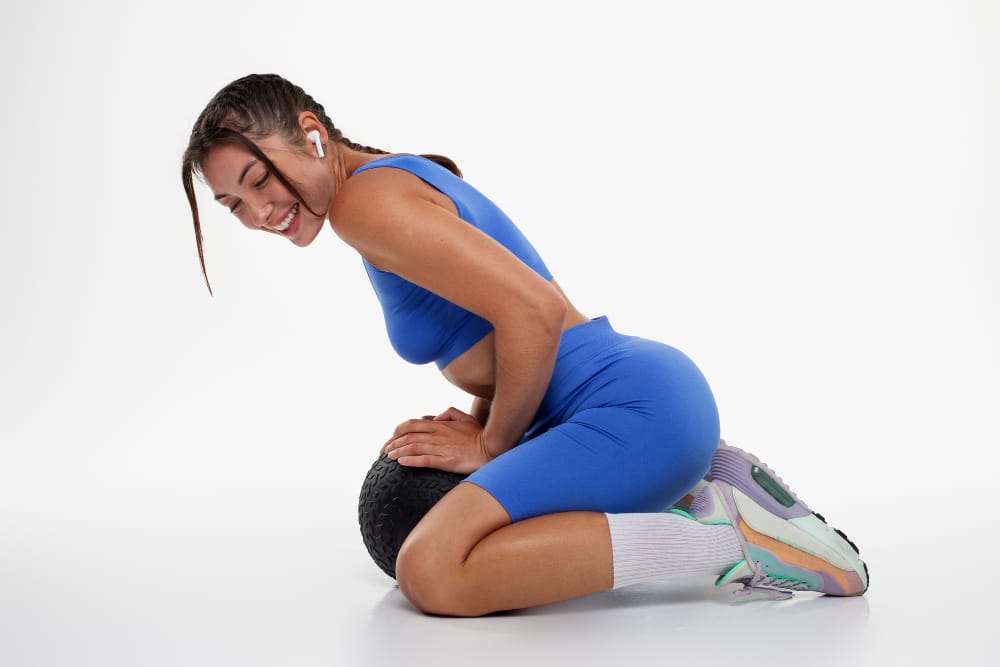FREE SHIPPING OVER $50
How to Do The Glute Ham Raise: Tips, Machines, and At-Home Hacks
The glute ham raise is one of the most effective exercises for building lower body strength, targeting your glutes, hamstrings, and core. But let’s be honest—it’s also one of the most intimidating. Whether you’re a gym enthusiast or a home workout warrior, mastering this move can feel like trying to solve a Rubik’s Cube blindfolded. Don’t worry, though. This guide will break it down step by step, covering everything from proper form to glute ham raise alternatives and even how to pull it off at home. Ready to transform your posterior chain? Let’s dive in.
What Is a Glute Ham Raise?

The glute ham raise (GHR) is a compound exercise that primarily targets the glutes and hamstrings while also engaging the lower back and core. It involves lowering your torso from a kneeling position and then using your hamstrings and glutes to pull yourself back up. Think of it as a reverse crunch for your lower body—challenging, but incredibly rewarding.
Why It’s Worth It:
- Builds explosive strength for sports and daily activities.
- Improves posterior chain mobility and stability.
- Enhances muscle definition in the glutes and hamstrings.
How to Do a Glute Ham Raise: Step-by-Step Guide
1. Set Up on a Glute Ham Raise Machine
If you have access to a glute ham raise machine, you’re in luck. Here’s how to use it:
- Kneel on the pad with your ankles secured under the foot roller.
- Engage your core and keep your body in a straight line from head to knees.
- Slowly lower your torso toward the floor, maintaining control.
- Use your hamstrings and glutes to pull yourself back to the starting position.
Pro Tip: Start with partial reps if you’re new to the movement. Full range of motion can be intense!
2. Master the Floor Glute Ham Raise
No machine? No problem. The floor glute ham raise is a fantastic alternative. Here’s how:
- Kneel on a soft surface with a partner holding your ankles or using a sturdy anchor.
- Lower your torso slowly, keeping your body straight.
- Push through your heels to return to the starting position.
Why It Works: This version mimics the machine movement and builds the same muscle groups.
Glute Ham Raise Alternatives: No Machine? No Worries
Not everyone has access to a glute ham raise machine, and that’s okay. Here are some effective alternatives to keep your progress on track:
1. Nordic Hamstring Curl
- Kneel on a soft surface with your ankles anchored.
- Lower your torso slowly, then use your hamstrings to pull yourself back up.
- This move is a close cousin to the glute ham raise and equally effective.
2. Romanian Deadlifts
- Hold a barbell or dumbbells, hinge at your hips, and lower the weight while keeping your back straight.
- This exercise targets the hamstrings and glutes, making it a great substitute.
3. Stability Ball Hamstring Curl
- Lie on your back with your heels on a stability ball.
- Lift your hips and roll the ball toward you, engaging your hamstrings and glutes.
How to Do a Glute Ham Raise at Home
No glute ham raise machine? No problem. With a little creativity, you can still nail this exercise at home. Here’s how:
1. Use a Stability Ball
- Kneel on a soft surface with your feet anchored under a heavy piece of furniture.
- Place a stability ball in front of you and roll it forward as you lower your torso.
- Push through your heels to return to the starting position.
2. Partner-Assisted Floor Glute Ham Raise
- Kneel on a soft surface and have a partner hold your ankles firmly.
- Lower your torso slowly, then use your hamstrings and glutes to rise back up.
3. Resistance Band Hack
- Anchor a resistance band to a sturdy object and loop it around your chest.
- Kneel on a soft surface and perform the movement, using the band for added support.
Choosing the Right Glute Ham Raise Machine
If you’re serious about incorporating the glute ham raise into your routine, investing in a machine might be worth it. Here’s what to look for:
1. GHD Glute Ham Raise Machine
- The gold standard for glute ham raises, the GHD machine offers stability and full range of motion.
- Look for adjustable pads and footplates for a customized fit.
2. Multi-Functional Machines
- Some machines combine glute ham raise functionality with other exercises like back extensions.
- These are great for maximizing space and versatility.
3. Budget-Friendly Options
- If you’re on a budget, consider a basic glute ham developer or even a DIY setup using a bench and resistance bands.
Common Mistakes to Avoid
Even seasoned gym-goers can slip up with the glute ham raise. Here’s what to watch out for:
1. Rounding Your Back
- Keep your core engaged and your back straight throughout the movement.
- Rounding your back can lead to injury and reduce the effectiveness of the exercise.
2. Using Momentum
- Avoid rushing through the movement. Slow, controlled reps are key to building strength.
3. Neglecting the Eccentric Phase
- The lowering phase is just as important as the lifting phase. Focus on controlling your descent.
Conclusion
The glute ham raise is a powerhouse move that can take your lower body strength to the next level. Whether you’re using a glute ham raise machine, trying a floor glute ham raise, or experimenting with at-home hacks, consistency is key. Don’t be discouraged if it feels challenging at first—like any skill, it takes practice. So, roll out your mat, grab a stability ball, or head to the gym and start building those glutes and hamstrings. Your future self will thank you.



